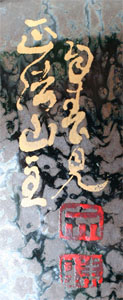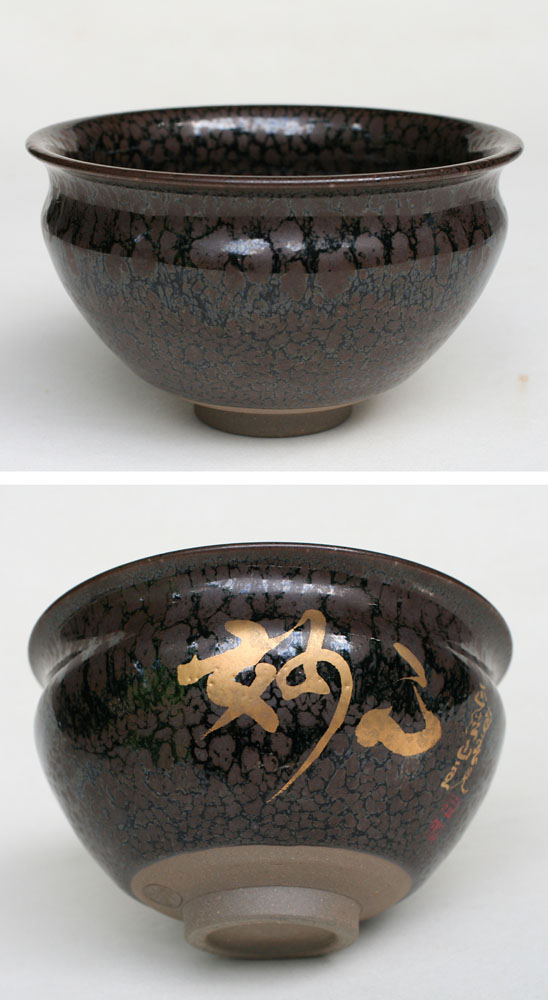Kyôyaki tenmoku style
Yuteki glazed Tenmoku chawan, teabowl - 心妙 - “Heart of wonders.”Signed: Shôhô sanshu Mizukara Kasumi
Seals: Bunshô, Yoshihiro?
Technique: Kyôyaki tenmoku style with Yuteki glaze Ø12.5 x 7.5
Box: signed
Condition: fine
The inscription reads: 心妙Kokoro myô - Heart of wonders
Box inscription: Chawan Heian Tôankama (kiln)
signed: Mei mizukura Myoshinjitô Bunshô [seal:] Tenkaku
Potter Yoshihiro Dobuchi??
Tenmoku is a type of Japanese pottery and porcelain that originates from Chinese Jian ware of the southern Song dynasty (1127–1279). Yuteki is a glaze with the effect of an oil drop.
Kasumi Bunshô, the 642nd abbot of Myôshin-ji, became a priest in 1921, but he only started his Zen training at Enpuku-ji temple at Yawata in 1933. In 1943 he became abbot at the Kaisei-ji temple in Nishomiya, the same temple where Nantembô and Deiryû resided before him. In 1949 he started his own dôjô, training hall, there and became shike, Zen master. In 1990 he was recommended to be 29th Kanchô, Chief Abbot, of the Myôshin sect at Myôshin-ji, again following in the footsteps of Nantembô and Deiryû. In 1994 he retired.
Reference:
Welch p.160
Dujin pp. 45-48, 86
Moog p. 32-33
The Kyôyaki kiln Tôan was founded in 1922 in Higashiyama Senyuji, Kyoto. At first its main business was making tiles for the Tokyo National Museum.The second head Chikayoshi is known as a sculptor. The third family head Yoshihide studied sculpturing and glazing for a long time in Germany. Now Yoshiaki Dobuchi succeeded as the 4th family head of Tôan. By now Tôan is one of the biggest pottery brands in Kyoto.
Price: EUR 650 / USD 702

